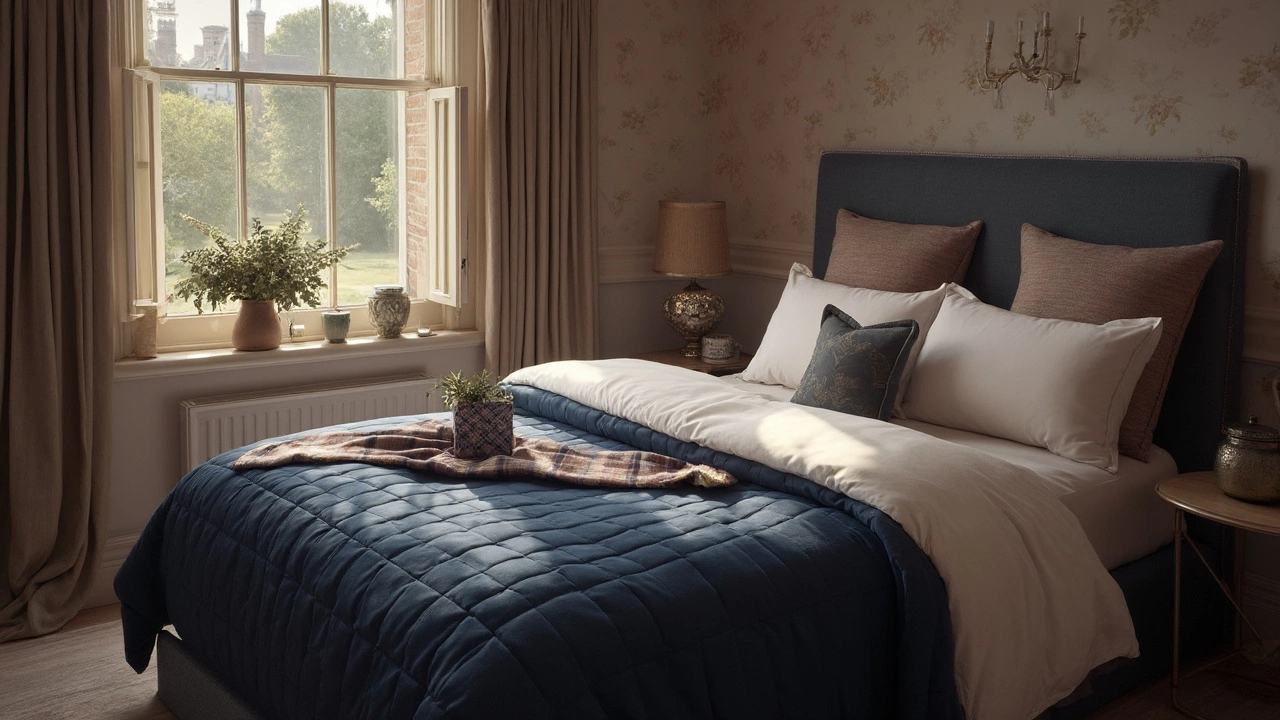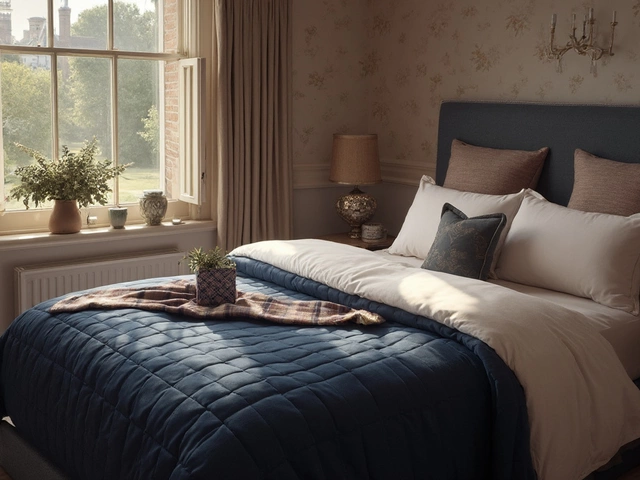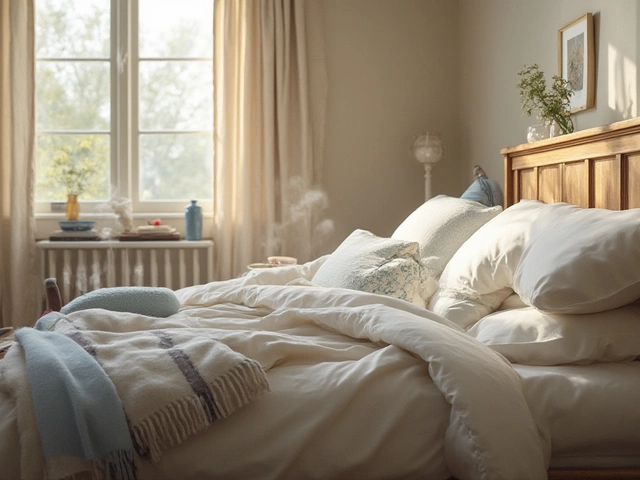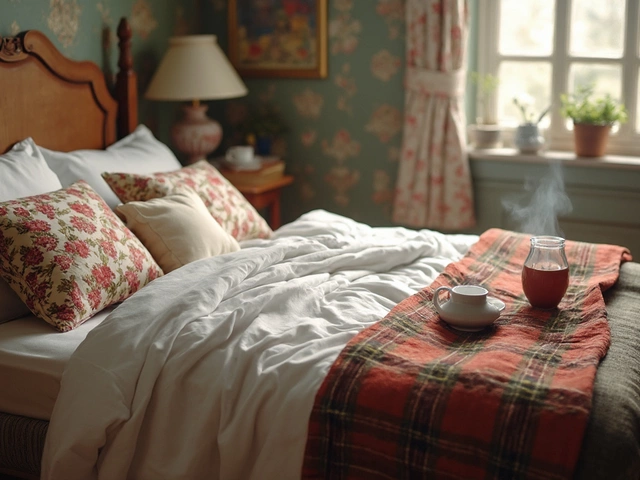Ever wondered why bedding matters so much for a good night's sleep? It’s not just about keeping warm; it’s all about that perfect blend of coziness and support. Whether you're upgrading your bedroom or just curious about what’s under those covers, knowing your bedding can make a huge difference.
Let’s talk sheets—your first point of contact each night. The thread count might sound fancy, but is it all that important? While a higher thread count often means smoother sheets, anything above 400 doesn’t always mean better. What really counts is the type of cotton or fiber and how it’s woven.
- Bedding Basics
- Types Of Beddings
- Choosing The Right Material
- Bedding Maintenance Tips
- Interesting Facts About Beddings
Bedding Basics
Okay, let’s dive into the world of bedding. It might seem straightforward, but there's quite a bit to unpack. First off, bedding isn’t just sheets. It’s everything that goes on top of your bed to make it comfy and inviting, from pillows to comforters and everything in between.
Sheets - The Foundation
Sheets are like the icing on the cake. They’re what your skin touches first and really set the tone for how comfy your sleep is. When choosing sheets, think about the material. Cotton is super popular for a reason; it's breathable and durable. But don't overlook other options like linen or bamboo if you’re feeling fancy or need something extra breathable for warmer nights.
Pillows - More Than a Headrest
You’d be surprised how much difference the right pillow can make. It’s not just about softness; support is key. Whether you prefer feather pillows or memory foam, make sure you’re keeping your neck and spine aligned. Waking up with a crick in your neck isn't fun for anyone!
Blankets and Comforters - The Warm Hug
These guys are all about warmth and weight. A good blanket or comforter can feel like a gentle hug as you drift off to sleep. Down comforters are like the warmest option ever, but if you’ve got allergies, go for down alternatives which are just as cozy.
Not only that, but styles vary too. You’ve got quilts, duvets, and comforters, each offering a different level of warmth and style. It’s all about what feels right for your bedroom vibe.
Layers Layer
Don't underestimate the power of layering. Adding a throw or an extra blanket can make your bed cozier and more stylish. Plus, it’s functional—you can peel layers off or pile them on as needed with changing temperatures.
| Bedding Type | Typical Cost | Warmth Factor |
|---|---|---|
| Sheets | $20 - $150 | Light |
| Comforters | $50 - $300 | Medium to High |
| Pillows | $10 - $100 | Varies |
So, now you know! Bedding isn’t just a one-note issue. It’s a symphony, and each piece plays its part in getting you that dreamy sleep.
Types Of Beddings
When it comes to getting a good night’s sleep, bedding can make all the difference. Let's break down the options, so you can pick what's best for you.
Sheets
Sheets are like the underrated hero of the bedding world. You're looking at two main types: fitted and flat. Fitted sheets come with elastic edges to hug your mattress, which means less shifting and more snugness. Flat sheets lie on top, serving as a sort of barrier between you and the blankets.
Blankets and Quilts
Blankets are usually made from wool, cotton, or fleece and add a simple layer of warmth. Quilts, on the other hand, are decorative and can add some serious style points to your bedroom. They're made by stitching together pieces of fabric, often in beautiful patterns, with a comfy filling.
"A good quilt combines both function and beauty, providing warmth while adding character to your room." - Martha Stewart
Comforters and Duvets
These two might seem interchangeable, but there’s a key difference. Comforters are filled with synthetic fibers and are quilted or sewn to keep the filling in place. They don't need covers, just like regular blankets. Duvets require a cover and are usually fluffier, filled with down, feathers, or a down alternative. They’re ideal for those who like to mix up their style without buying a new bedding set every time.
Pillows and Pillowcases
Pillows are crucial for support—without them, neck pain is practically guaranteed. Soft, firm, and memory foam are just a few types to consider based on how you sleep. Pillowcases come in materials like cotton, silk, or polyester—each providing their own feel and benefits.
| Type | Common Fill | Best For |
|---|---|---|
| Memory Foam Pillow | Foam | Neck Support |
| Down Pillow | Feathers | Softness |
Mix and match these bedding elements to create a sleep environment that's perfect for you. Investing a bit of time in choosing the right materials can lead to cozy, comfortable nights and well-rested mornings.
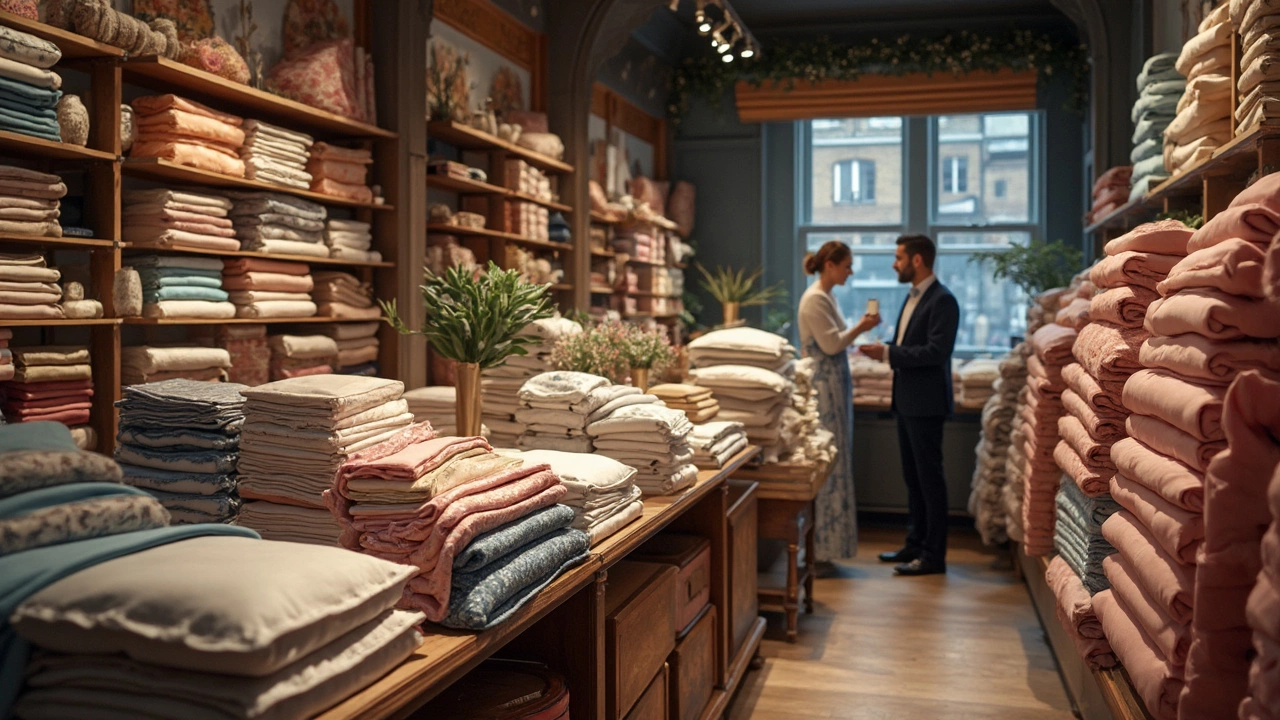
Choosing The Right Material
Picking the right material for your bedding is like choosing the right ingredients for a recipe. It’s all about knowing what works best for you. Let’s break down the materials, so you can find what matches your sleep vibe.
1. Cotton: The Sleep Classic
Cotton is the go-to for many people. It’s breathable, easy to wash, and generally kind to the skin. But, not all cotton is the same. You might come across terms like Egyptian or Pima cotton. These refer to the type of cotton plant and the length of the fibers, which usually means softer, more durable sheets.
According to Sandra Gordon, a consumer expert, "Cotton percale or sateen sheets are the backbone of a comfy bed setup. Always look for the style that suits your preference—crisp vs. silky."
2. Silk: Luxury Feel
Silk bedding is all about that silky smooth touch. It's great for people with sensitive skin and it's naturally hypoallergenic. Plus, it’s got that luxury look going on. But keep in mind, silk sheets need a bit of extra TLC. They're not for the tumble dryer.
3. Flannel: For the Cold Nights
If you’re someone who’s always chilly, flannel might become your best friend. It’s fluffy, warm, and perfect for winter months. Though, if you run hot at night, maybe skip this one—it can get sweltering.
4. Linen: The Breezy Option
Linen is known for its durability and breathability. It’s ideal for hot sleepers or warm climates because it wicks moisture away. As a bonus, linen actually gets softer with each wash.
Here’s a quick comparison of some materials:
| Material | Breathability | Durability |
|---|---|---|
| Cotton | High | High |
| Silk | Medium | Medium |
| Flannel | Low | High |
| Linen | Very High | Very High |
Ultimately, choosing the right bedding material boils down to personal preference. It’s worth experimenting with different types until you find your perfect match. Happy snoozing!
Bedding Maintenance Tips
Getting your bedding clean and fresh is an art form. But don't worry, it’s easier than it sounds and totally worth it. Let’s dive into some simple, no-nonsense tips to keep your bedding in top shape.
Laundry 101
Washing your bedding isn't rocket science, but there are a few tricks to know. First, aim to wash your sheets and pillowcases weekly. This keeps them fresh and helps with allergens. Use a gentle cycle for most materials and avoid overloading the washer, so everything gets a good clean.
An expert from the American Cleaning Institute says,
“Using hot water is great for killing germs, but always check the care label to ensure you aren’t damaging the fabric.”So, check your labels!
Drying Right
Tumble drying is usually safe, but again, check the label. Use a low heat setting to prevent shrinking and maintain softness. If you’ve got the space and time, air-drying is a wonderful alternative—just make sure they’re bone dry before putting them back on your bed.
Smart Storage
When your bedding isn’t in use, like during seasonal changes, storing it properly makes a difference. Use breathable bags to prevent musty smells or dampness. You’d be surprised how a small change can extend the life of your favorite set.
Rotating Routine
Everyone loves a change, and so does your bedding. Rotate your sheets every few weeks. This simple habit reduces wear and tear, and hey, it keeps things interesting!
A Quick Look at Stats
According to a survey by the National Sleep Foundation, most people wash their sheets every two weeks. Still, making it a weekly routine is shown to highly improve sleep quality.
| Frequency | Impact on Sleep |
|---|---|
| Weekly | Highly Improved |
| Bi-Weekly | Moderately Improved |
Remember, these maintenance tips not only keep your bedding looking nice, but they also add to the comfort and quality of your sleep. Sweet dreams!

Interesting Facts About Beddings
Bedding isn't just about making your bed look nice; it has a rich history and some pretty cool facts that might surprise you. Did you know that bedding has been around for thousands of years? It started with straw and animal skins in ancient Egypt to the lush mattresses and linens we know today.
Historical Tidbits
In the Middle Ages, only the wealthy had access to soft bedding materials like down feathers. Common folks made do with straw-filled mattresses. It wasn’t until much later that sleep comfort became more widely accessible.
Modern Insights
With so many bedding choices today, it's interesting to note that synthetics aren’t necessarily the bad guy. While natural fibers like cotton breathe better, synthetic blends often last longer and are less expensive.
“A good bed is a foundation to the whole human frame, and one that should not be overlooked.” - Dr. William Hardwick, Sleep Analyst
Quality Counts
Statistics show that people who invest in quality bedding see a 25% improvement in sleep quality. That’s a big deal! Don’t underestimate the power of a properly chosen duvet or pillow to improve your rest.
Fun Fact Round-Up
- The invention of the fitted sheet is often credited to Berta Berman, who patented her version in 1959. Now they're essential in households worldwide.
- Studies have shown that changing bed linen at least weekly can improve your overall sleep experience.
- Good bedding can even impact your allergies. Hypoallergenic materials can prevent dust mites and other allergens from disturbing your rest.
